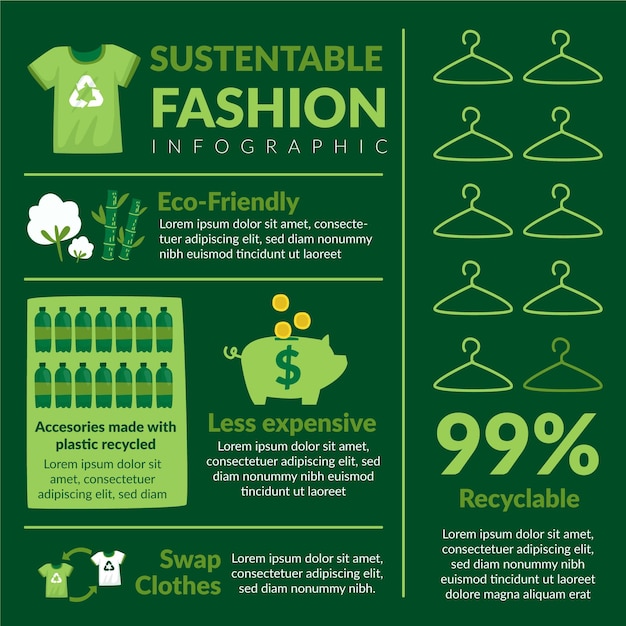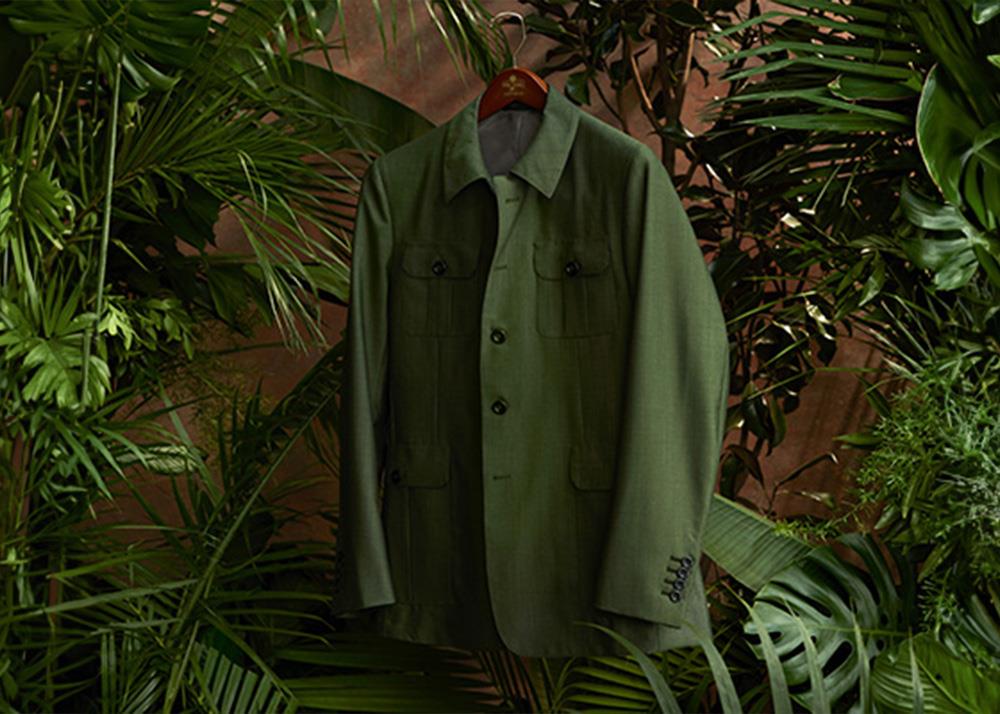Just How Cape Town Sustainable Fashion is Shaping Eco-Conscious Purchasing
Keep Ahead of the Curve by Discovering Cutting-edge Style Patterns
In a sector as dynamic as fashion, staying ahead entails greater than simply complying with present patterns-- it requires an expedition of technology. Smart fabrics, for instance, are transforming garments right into functional masterpieces, while 3D printing is transforming style procedures with its customizable, waste-reducing capacities. As sustainability comes to be a cornerstone, innovations like environmentally friendly products and round style methods are improving environmental obligation - Cape Town Sustainable Fashion. Moreover, the merging of innovation and fashion declares a new era of customer interaction. Just how, after that, can these emerging fads redefine the future of fashion, and what ramifications do they hold for brands looking for to flourish in this evolving landscape?

Embracing Smart Textiles
In current years, the fashion market has experienced a transformative shift with the integration of wise textiles, a cutting-edge technology that blends innovation with textile. This advancement represents not just a blend of aesthetics and functionality however likewise a significant leap in the direction of sustainability and personalization in style. Smart fabrics, likewise referred to as e-textiles, embed advanced electronics such as sensing units and conductive threads within the fabric, allowing garments to engage with the setting or the wearer.
These fabrics are made to keep track of physical specifications, such as heart rate or body temperature level, providing real-time wellness analytics. Past health applications, clever fabrics are likewise being made use of for flexible clothes, which can alter color or pattern in action to environmental stimuli, therefore offering a dynamic fashion experience.
Furthermore, the advancement of energy-harvesting textiles that generate power from motion or sunlight is leading the way for self-sufficient wearable modern technology. This development is attracting environmentally conscious consumers and designers intending to reduce the ecological footprint of style. As r & d in this area advance, clever textiles are anticipated to become significantly common, improving the landscape of modern-day style with their multifunctional capabilities.
The Rise of 3D Printing
Transforming the manufacturing landscape, 3D printing has actually become a game-changer in the apparel industry. This sophisticated technology has allowed developers to push the borders of creative thinking, creating complex and tailored garments that were previously inconceivable. By leveraging electronic style and additive production, 3D printing facilitates the development of complicated geometries and patterns, enabling designers to try out brand-new appearances and structures.
A remarkable advantage of 3D printing in vogue is its ability to generate on-demand, minimizing waste and reducing supply demands. This effectiveness not just enhances manufacturing procedures yet likewise enables for rapid prototyping, allowing developers to bring their visions to life in a shorter timeframe. Additionally, 3D printing sustains customization to a degree unequaled by standard techniques, using personalized fits and distinct styles tailored to individual consumer preferences.
The increase of 3D printing has additionally equalized fashion, making it available to arising developers who can currently make top quality pieces without considerable financial investment in typical manufacturing infrastructure. As technology remains to advance, the fashion business is poised to harness the complete possibility of 3D printing, exploring new materials and techniques that will definitely redefine exactly how fashion is conceived and generated.
Sustainable Fashion Technologies
As the garment industry faces the pressing need for environmental obligation, sustainable style advancements have actually arised at the center of transformative modification. The expanding understanding of eco-friendly influence has actually sustained a shift get more towards more eco-conscious practices and products. Designers and brand names are currently focusing on sustainability, including approaches that reduce waste and reduce carbon impacts.
One substantial growth is the rise of round style, which stresses recycling and upcycling to expand the lifecycle of garments. This approach not just decreases waste but also motivates consumers to adopt an extra mindful approach to apparel usage.
Another breakthrough lies in the adoption of cutting-edge dyeing strategies that use waterless procedures or natural dyes, thereby lowering the huge amounts of water and chemicals generally used in fabric dyeing. Moreover, improvements in biotechnology have caused the creation of lab-grown natural leather and textiles, offering cruelty-free and eco pleasant choices to conventional materials. Through these introducing efforts, the garment industry is making meaningful strides in the direction of an extra lasting future.

Tech-Integrated Apparel
Tech-integrated garments stands for an innovative blend of fashion and technology, reshaping just how individuals communicate with their clothes. This cutting-edge domain name is marked by the inclusion of wise textiles and ingrained digital components, improving both performance and aesthetic allure. From fitness trackers installed in sportswear to warmed jackets controlled via smart device apps, tech-integrated garments offers customers unprecedented comfort and versatility.
Pioneering brand names are driving this trend, concentrating on developing garments that react to ecological stimulations or user commands. As an example, some garments can change shade or pattern in response to temperature level changes, while others incorporate biometric sensors to keep an eye on wellness metrics like heart rate or stress degrees. The seamless combination of technology right into textiles also includes ecological sustainability, with efforts to establish self-cleaning textiles or garments that adapt to weather, hence reducing the need for several layers.
Moreover, the arrival of wearable technology is not just restricted to apparel however includes devices like watches and glasses, further widening the scope of tech-integrated style. As the industry continues to innovate, the potential for personalization and customization in apparel expands, using consumers one-of-a-kind, tech-enhanced style experiences that accommodate their individual needs and choices.
Future of Virtual Fashion
In the last few years, the future of virtual style has read this article actually become a transformative force within the industry, leveraging advancements in digital modern technology to redefine just how style is developed, experienced, and consumed. By incorporating enhanced fact (AR), virtual fact (VIRTUAL REALITY), and 3D style devices, designers can now craft immersive and interactive experiences that transcend standard fashion limits. Virtual fashion permits the development of garments that exist solely in electronic settings, providing limitless opportunities for technology without the restrictions of physical production.
This electronic shift not only provides possibilities for innovative expression however also addresses sustainability worries inherent in standard fashion methods. Cape Town Sustainable Fashion. By getting rid of the need for physical sources, online fashion reduces waste and reduces carbon impacts. Additionally, the rise of digital fashion aligns with the boosting customer demand for special and tailored experiences, additional resources as digital garments can be customized and tailored to individual preferences effortlessly

Final Thought
The fashion sector's future lies in the assimilation of lasting techniques and cutting-edge modern technologies. Virtual fashion is positioned to redefine customer interactions.
In current years, the fashion market has experienced a transformative change with the combination of smart fabrics, an innovative technology that mixes innovation with material.As the fashion market grapples with the pushing demand for ecological obligation, lasting style developments have emerged at the forefront of transformative modification.In current years, the future of online fashion has emerged as a transformative force within the sector, leveraging innovations in electronic innovation to redefine exactly how fashion is developed, experienced, and taken in. The increase of digital fashion aligns with the enhancing consumer demand for unique and tailored experiences, as online garments can be personalized and customized to specific preferences with ease.
The fashion sector's future lies in the combination of cutting-edge modern technologies and sustainable practices.